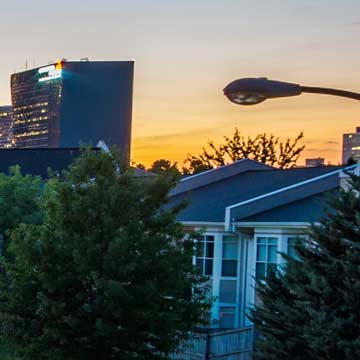Clinton: Look beyond judges for high court pick
Notable Attorneys
Bill Clinton says someone who hasn't been a judge should be considered for the Supreme Court. But scratch the idea of the ex-president or his wife as a justice.
Clinton suggested that President Barack Obama follow a model that Clinton used when he tried unsuccessfully to persuade then-New York Gov. Mario Cuomo and then-Senate Majority Leader George Mitchell to agree to be nominated to the high court.
Justice John Paul Stevens' recent decision to retire hands Obama a second chance to shape the court.
Clinton, who has not been a judge, said that at 63, told ABC's "This Week" that he's too old to be considered, much as he might enjoy serving on the Supreme Court. He said his wife, Secretary of State Hillary Rodham Clinton, also might have been interested in past years, but not now.
Bill Clinton, who also had two court vacancies during his first years in office, ended up nominating two federal appeals court judges, Ruth Bader Ginsburg and Stephen Breyer. Ginsburg was 60 and Breyer was in his early 50s.
The former president urged Obama to pick someone around 50 years old.
Obama's Democratic predecessor in the White House says Cuomo and Mitchell, who had been a judge before serving in the Senate, would have made good justices, but both turned him down. He said he hopes Obama takes a look at someone who hasn't been a judge.
Among those reported to be under consideration, Solicitor General Elena Kagan, 49, has never been a judge.
Related listings
-
SHEPPARD MULLIN RE-ELECTS CHAIRMAN GUY HALGREN
Notable Attorneys 04/16/2010Sheppard Mullin Richter & Hampton LLP is pleased to announce that the firm's chairman of the executive committee, Guy N. Halgren, has been re-elected to a fourth consecutive, three-year term leading the firm. Halgren was first elected to th...
-
Eugene, Oregon Criminal Defense Lawyer
Notable Attorneys 03/11/2010Max Mizejewski received his undergraduate degree from the University of California at Berkeley in 1993. In 1997, Max graduated from Northwestern School of Law of Lewis and Clark College and went on to work in the public sector before entering private...
-
UBS Lawyer Schmid Takes Job at Swiss Law Firm
Notable Attorneys 02/09/2010Bernhard Schmid, the head of UBS AG’s legal department, left Switzerland’s biggest bank by assets to become a partner at a Zurich law firm founded by a former banker.Schmid joined Kuoni Attorneys at Law on Feb. 1 to help the company increase its work...

USCIS Will Begin Accepting CW-1 Petitions for Fiscal Year 2019
On April 2, 2018, U.S. Citizenship and Immigration Services (USCIS) will begin accepting petitions under the Commonwealth of the Northern Mariana Islands (CNMI)-Only Transitional Worker (CW-1) program subject to the fiscal year (FY) 2019 cap. Employers in the CNMI use the CW-1 program to employ foreign workers who are ineligible for other nonimmigrant worker categories. The cap for CW-1 visas for FY 2019 is 4,999.
For the FY 2019 cap, USCIS encourages employers to file a petition for a CW-1 nonimmigrant worker up to six months in advance of the proposed start date of employment and as early as possible within that timeframe. USCIS will reject a petition if it is filed more than six months in advance. An extension petition may request a start date of Oct. 1, 2018, even if that worker’s current status will not expire by that date.
Since USCIS expects to receive more petitions than the number of CW-1 visas available for FY 2019, USCIS may conduct a lottery to randomly select petitions and associated beneficiaries so that the cap is not exceeded. The lottery would give employers the fairest opportunity to request workers, particularly with the possibility of mail delays from the CNMI.
USCIS will count the total number of beneficiaries in the petitions received after 10 business days to determine if a lottery is needed. If the cap is met after those initial 10 days, a lottery may still need to be conducted with only the petitions received on the last day before the cap was met. USCIS will announce when the cap is met and whether a lottery has been conducted.

